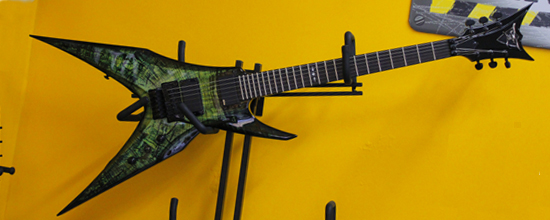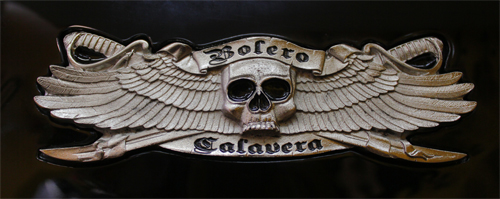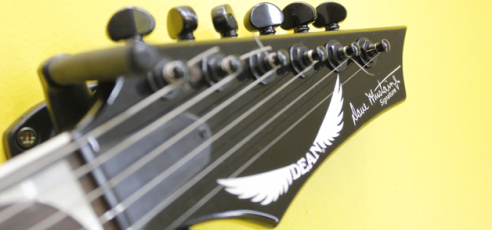-
Specs
This guitar was made in Indonesia, where most Ibanez guitars other than the Prestige series are made. It’s got a basswood body, a bolt-on Wizard II maple neck, a rosewood fingerboard with shark-tooth inlays and 24 jumbo frets, an Edge III floating bridge, and HSH configuration. The pickups are passive Ibanez “Infinity” series. The neck pickup is an Infinity 4, the middle is a Infinity single 3, and the bridge is an Infnity 3. There’s a tone knob and volume knob, and a five-way selector. The tuners are made by Ibanez which doesn’t make much of a difference since the locking nut takes care of the tuning stability.
-
Sound
The guitar supplies a wide variety of tones. I generally used it with a Roland Cube 15 and or a Randall RG75DG3Plus amplifier. The bridge pickup is great for rhythm, very tight, and clear, the neck pickup, which is what most players use for solos, can sound a bit muddy if the bass is turned up pretty high, but it generally provides a smooth sound that’s great for fast legato runs. Using the pickups in the 2nd and 4th combines the middle pickup with the neck or bridge pickup coil-tapped giving convincing single-coil sounds, perfect for playing blues with light overdrive. Although the guitar is generally associated with metal, it sounds surprisingly well on a clean setting. The shark-tooth inlays, sharp headstock, and pointy cut-aways can be misleading about this guitar’s capabilities. Using the middle pickup alone provides a crystal-clear sound, perfect for strumming chords and clean tapping; however, as in the case of most stock single coil pickups, it has a slight hum. Using it with the neck and bridge pickup gives a somewhat nasal sound that’s nice for funk. Using the bridge pickup alone gives a bright clean sound without getting overdriven during heavy strumming. The neck pickup provides a sound that’s great for clean soloing, especially when used with reverb. It’s smooth and clear.
-
Feel and Finish:
This guitar feels like a lean mean shred machine. The Wizard II neck is thin and smooth which makes position-shifting and fast runs comfortable to execute. The jumbo frets also add to the element of comfort since they require a lighter touch, so players don’t have to press down as hard to get the notes to ring making legato playing easier. However, players with heavy hands that tend to press down hard would find this uncomfortable and bad-sounding since the notes will come out of tune. Also, who like to pick close to the bridge would find difficulties playing this guitar because of the floating bridge, but this is rather uncommon, and requires a while to get used to. The bridge is smooth, not as smooth as the ZR bridges, but it does the job well. The finish is black including the body, the headstock, and the hardware. It’s best to wipe the guitar after long hours of playing since moisture would damage the hardware after a while.
-
Reliability
I haven’t gigged with this guitar, but after my friend got it, he started gigging with it constantly and it does the job perfectly for him. The strap buttons are sturdy but I wouldn’t recommend throwing the guitar around like Malmsteen does, unless straplocks are used. The bridge stays in tune for long periods of time until the strings start to get old. Although the EDGE III is generally looked down upon in most forums, it actually functions perfectly when it’s set-up right.
-
Impression
In general the guitar is performs great in most styles. However, people who often like to change tunings would want to reconsider getting this guitar since the floating bridge would require major readjustments.










